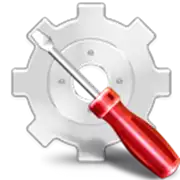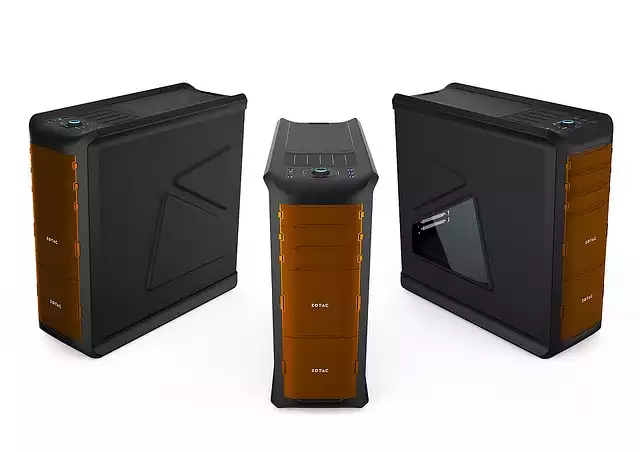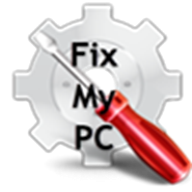Building your own ultimate barebones PC is an exciting venture that empowers you to create a machine tailored specifically to your needs.
Whether you’re a gamer seeking unmatched performance, a content creator in need of powerful processing capabilities, or simply someone who appreciates the finer details of technology, a barebones PC offers a customizable foundation to elevate your computing experience.
In this article, you’ll explore the essential components and considerations that go into constructing a system that aligns with your specific requirements.
You’ll learn about selecting the right case, motherboard, and power supply, as well as the importance of future scalability and compatibility.
By opting for a barebones build, you not only gain the satisfaction of assembling your own system but also the knowledge and skills that come from understanding each component’s role.
This guide will provide you with the insights and steps necessary to navigate the building process, ensuring you make informed decisions that enhance your ultimate PC experience.
Get ready to dive into the world of PC building, where creativity meets functionality, and take the first step toward crafting a machine that truly reflects your unique computing needs.
Table of Contents Build Your Own Ultimate Barebones PC
Choose the right Custom DIY Computer Kit for your needs and budget
When selecting a Custom DIY Computer Kit, it’s essential to assess your specific needs and budget to ensure you make an informed decision.
Consider what you will primarily use the computer for—whether it’s gaming, graphic design, or everyday tasks—as this will dictate the type of components you require.
A personalized PC construction that aligns with your intended use will enhance performance and longevity.
Additionally, factor in your budget constraints; a more expensive kit may offer superior components but could also stretch your finances.
To simplify the process, utilize a comprehensive PC assembly guide that outlines the required barebones system components for different performance levels.
This will help you identify which parts are necessary and which can be omitted to stay within budget.
As you navigate your options, keep in mind some DIY computer building tips, such as prioritizing quality over quantity in key components like the motherboard and power supply, to ensure a reliable and efficient build that meets your expectations.
Select Barebones System Components wisely for optimal performance and compatibility
When choosing barebones system components, prioritize compatibility and performance to ensure a smooth build.
Begin by verifying that the motherboard supports the specific CPU and RAM you intend to use, as these components will significantly influence your system’s overall speed and efficiency.
Additionally, consider the expansion capabilities of the motherboard—will it accommodate future upgrades? A well-thought-out selection of components can prevent bottlenecks and enhance your computer’s responsiveness, particularly for demanding applications.
Furthermore, pay attention to the power supply unit (PSU) specifications; it should provide sufficient wattage for all your components while maintaining efficiency.
A reliable PSU can not only prevent system instability but also extend the lifespan of your hardware.
Balancing quality and compatibility among your barebones system components will ultimately lead to a more effective and reliable personalized PC construction, ensuring that your DIY computer building experience is both enjoyable and rewarding.
Follow a detailed PC Assembly Guide to ensure a successful build process
Utilizing a comprehensive PC assembly guide is pivotal in achieving a successful build process, especially when tackling a custom DIY computer kit.
Such a guide offers step-by-step instructions that simplify complex tasks, ensuring that you don’t overlook critical details during the assembly of your barebones system components.
By following these detailed instructions, you minimize the likelihood of errors that could lead to hardware malfunctions or compatibility issues.
Additionally, visual aids and tips provided in these guides can enhance your understanding of the assembly process, making it more accessible, even for those with limited technical experience.
As you embark on this personalized PC construction journey, remember to take your time and follow each step methodically.
DIY computer building tips within the guide can help you avoid common pitfalls, such as improper cable management or incorrect component placement.
By approaching your build with patience and precision, you’ll foster an environment for optimal performance and longevity in your new system, paving the way for an efficient and enjoyable computing experience.
Gather all necessary tools before starting your personalized PC construction project
Having all necessary tools at your disposal is essential for a smooth and efficient personalized PC construction experience.
Ensure that you have a quality screwdriver set, anti-static wrist strap, and cable ties ready before you begin.
These tools will not only facilitate the assembly of your barebones system components but will also help maintain organization and prevent damage to sensitive hardware.
A well-prepared workstation with these essential tools will allow you to focus on the intricacies of your build without unnecessary interruptions.
Moreover, double-checking your toolkit against the requirements outlined in your PC assembly guide can save you valuable time and frustration later in the process.
Having everything in place ensures you can quickly address any installation challenges that arise.
By prioritizing this preparatory step, you enhance your overall experience with the custom DIY computer kit and set yourself up for a successful completion of your personalized PC construction project.
Research components to find the best DIY Computer Building Tips for your design
Understanding the various components is crucial when embarking on your journey to construct a personalized PC.
Taking the time to research compatible hardware and software options will empower you to make informed decisions that align with your design goals.
Familiarizing yourself with specifications and performance benchmarks of different barebones system components will enable you to select parts that not only meet your requirements but also enhance your overall computing experience.
Consider consulting reputable online forums, product reviews, and video tutorials that offer DIY computer building tips tailored to your unique needs.
Additionally, staying abreast of the latest trends and innovations in the PC building community can uncover valuable insights that could influence your assembly process.
By engaging with experienced builders and gathering diverse perspectives, you can identify potential pitfalls and best practices that will streamline your project.
This commitment to thorough research ensures that your custom DIY computer kit will achieve optimal performance and longevity, ultimately resulting in a highly personalized and efficient system.
Prioritize quality over quantity when selecting parts for your ultimate barebones PC
When selecting components for your custom DIY computer kit, it’s essential to focus on quality rather than simply amassing a larger quantity of parts.
High-quality components tend to offer better performance, longevity, and reliability, which can significantly enhance your system’s overall efficiency.
Investing in a few premium parts—like a robust motherboard or a high-performance graphics card—can yield superior results compared to equipping your PC with several lower-tier options that may hinder performance and lead to potential compatibility issues.
In the context of personalized PC construction, prioritizing quality can also facilitate easier upgrades in the future, as top-tier components often support newer technologies and standards.
As you navigate through the myriad of options available in a barebones system, consider how each piece contributes to the whole.
Aim to assemble a balanced configuration where each part is a valuable contributor, ensuring that your ultimate barebones PC excels in both performance and durability.
This strategic approach will not only enhance your immediate experience but also lay a strong foundation for future enhancements.
Ensure proper ventilation and cooling in your customized PC setup for longevity
Ventilation and cooling play a critical role in maintaining the performance and lifespan of your personalized PC construction.
Proper airflow helps dissipate heat generated by high-performance components, such as your CPU and graphics card, preventing thermal throttling that can occur when temperatures rise too high.
When assembling your system, ensure that you strategically position fans to create an efficient airflow path.
Intake fans should draw cool air from outside the case, while exhaust fans help expel hot air generated inside.
This balance not only improves cooling but also reduces dust accumulation, which can further obstruct airflow and lead to overheating.
In addition to fan placement, consider the use of aftermarket cooling solutions, such as liquid cooling systems or high-quality air coolers, which can enhance thermal management in a DIY computer building project.
Monitoring the temperature of your components through software tools can provide insight into how effectively your cooling system is functioning.
By prioritizing adequate ventilation and cooling in your setup, you significantly increase the longevity and reliability of your barebones system components, ensuring that your investment remains viable for years to come.
Secure all connections firmly during assembly to prevent any operational issues later
Throughout the assembly process, you must ensure that all connections are secured firmly to avoid potential operational issues later on.
Loose cables and improperly seated components can lead to inconsistent performance, system crashes, or even hardware damage.
When working with your custom DIY computer kit, take the time to double-check every connection, including power supply cables, data cables, and peripheral connections.
A meticulous approach to securing these components not only enhances reliability but also contributes to the overall stability of your barebones system.
As you progress through your PC assembly guide, remember that attention to detail in securing connections will pay off in the long run.
Utilize cable management techniques to keep your workspace organized, which can prevent accidental disconnections or interference with airflow.
By investing the necessary effort during the assembly phase, you safeguard your personalized PC construction against future complications, ensuring that your DIY computer building experience is both successful and rewarding.
Test each component thoroughly before finalizing your personalized PC construction
Before concluding your personalized PC construction, it is essential to perform thorough testing on each component to ensure optimal functionality and performance.
Begin by systematically checking the power supply, motherboard, memory, and storage devices.
Running diagnostics on these components not only verifies their proper operation but also helps to identify any potential issues that could disrupt your overall system performance.
Utilize benchmarking software and stress tests to assess the reliability and efficiency of your barebones system, ensuring that it meets your expectations and intended use.
Incorporating this step into your DIY computer building tips can save you time and frustration down the line.
If you encounter any discrepancies during testing, addressing them promptly will help avoid complications during your PC’s operational life.
A well-tested configuration not only enhances the longevity of your system but also ensures that you can fully enjoy the capabilities of your custom DIY computer kit without unexpected interruptions.
Taking the time to validate each component reinforces the foundation of a robust and high-performing PC tailored to your specific needs.
Celebrate your accomplishment once your DIY computer is fully assembled and operational
Upon successfully assembling and powering up your custom DIY computer kit, take a moment to acknowledge your hard work and dedication.
The journey of personalized PC construction can be both challenging and rewarding, and reaching this milestone signifies not just technical achievement, but also a deeper understanding of your system’s functionality.
Whether you opted for specific barebones system components or tailored your setup to suit particular applications, the fruit of your labor is now a fully operational machine engineered to meet your needs.
As you begin to explore the capabilities of your newly assembled PC, consider sharing this accomplishment with fellow enthusiasts or through online communities.
Documenting your experience can provide invaluable insights for others looking to embark on their own DIY computer building journey.
Embrace this moment, for it represents not only the culmination of your efforts but also the potential for future upgrades and optimizations.
Enjoy the satisfaction of seeing your vision come to life, knowing that you have created a powerful tool tailored to your specifications.
In conclusion, building your own ultimate barebones PC offers a rewarding and customizable experience that caters to your specific needs and preferences.
As you select each component, from the motherboard to the cooling system, you empower yourself to create a machine that reflects your performance requirements and aesthetic ideals.
This hands-on approach not only enhances your technical skills but also ensures you can upgrade and maintain your system with ease in the future.
By investing the time and effort into this project, you’re not just assembling a computer; you’re crafting a powerful tool that can elevate your productivity and gaming experience for years to come.
So, take the plunge and embark on this exciting journey—your ideal PC awaits.


